Imagine a place where dry deserts meet snow-covered mountains, where old monasteries sit quietly under the big blue sky, and where every road leads to a new adventure. Welcome to Ladakh — one of the most peaceful and stunning parts of India.
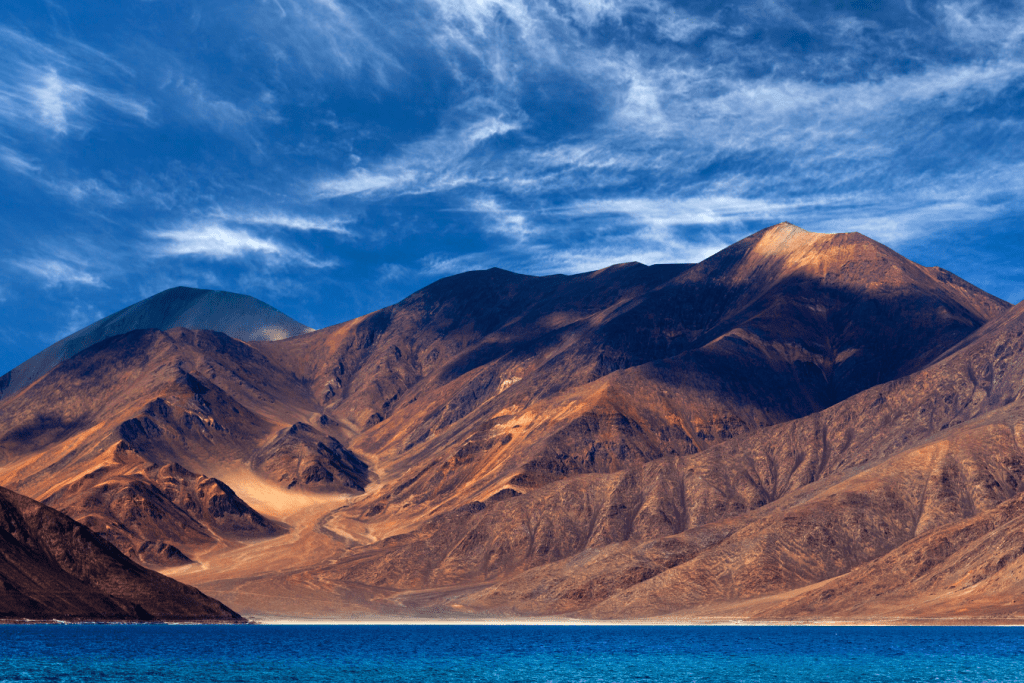
1. What is Ladakh and Where is it Located?
Ladakh is a beautiful and peaceful region in the far north of India. In 2019, it became a separate Union Territory, after being part of Jammu & Kashmir. It lies between two huge mountain ranges — the Himalayas and the Karakoram — and is one of the highest places where people live in the world.
Because it’s so high up, Ladakh is often called the “roof of India.” The land here is very different — there are dry deserts, snow-covered mountains, clean blue lakes, and clear skies. It’s also known for its strong Buddhist culture, old monasteries, and friendly people.
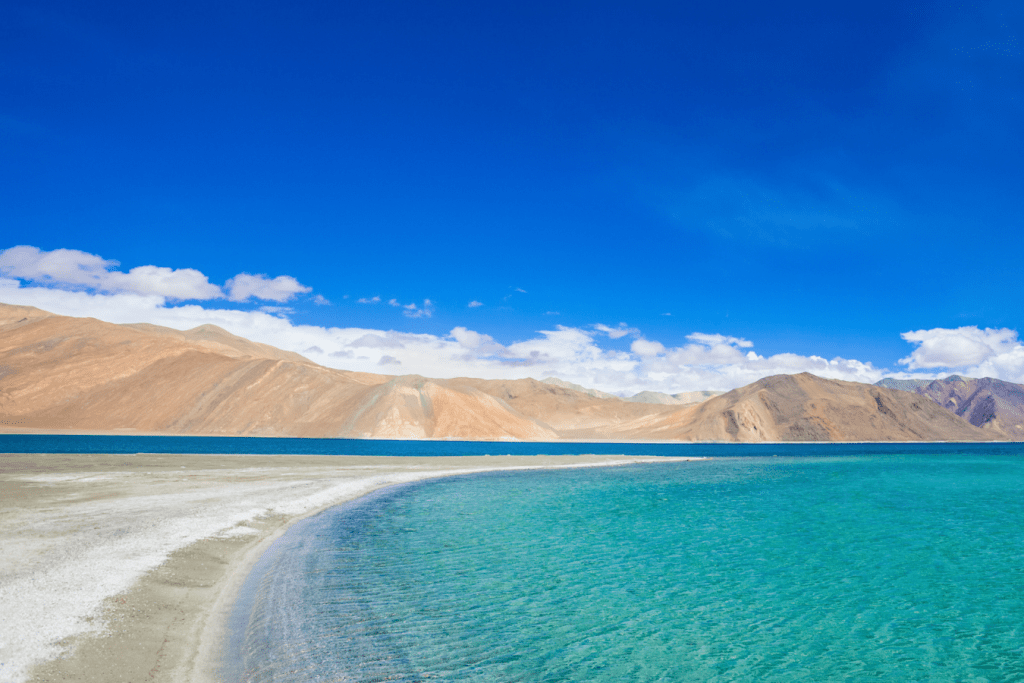
When you visit Ladakh, it feels like you’re in another world — far from busy cities and noise. Life here moves slowly and stays close to nature. Whether you’re looking for peace, adventure, or a bit of both, Ladakh offers something truly special.
2. Is Ladakh Safe for Tourists?
Yes, Ladakh is one of the safest places to visit in India — even for solo travelers. The local people are warm, helpful, and known for their honesty. Many visitors, including solo women, say they feel completely safe while exploring Leh and nearby villages.
However, safety in Ladakh isn’t just about low crime. It’s also about being prepared for the harsh natural environment. Ladakh is a high-altitude desert with rough roads, thin air, and sometimes unpredictable weather. That means:
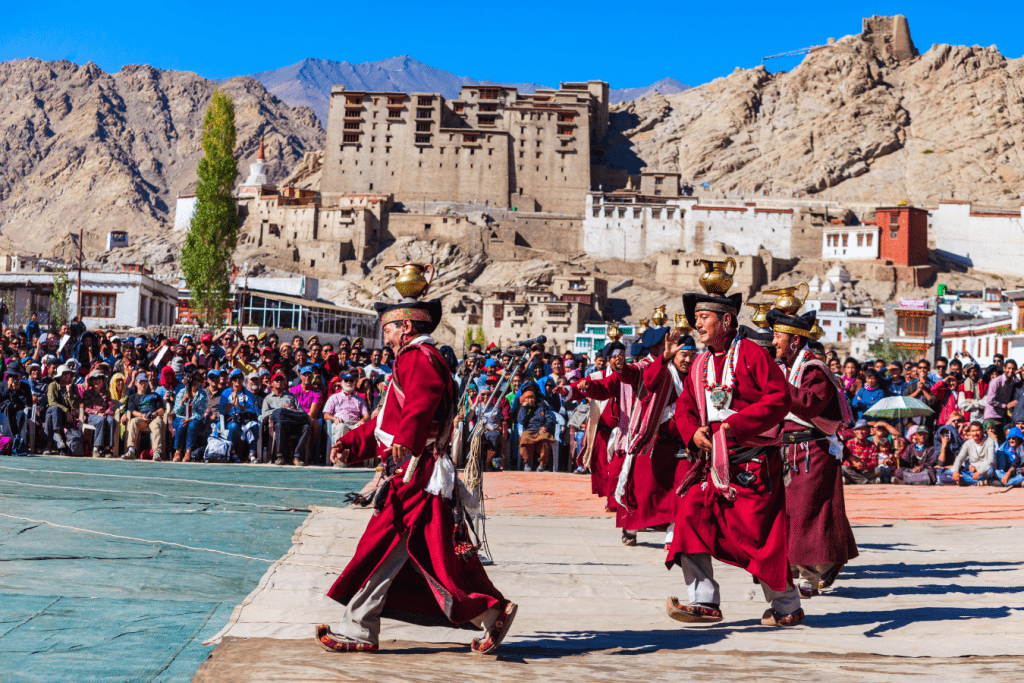
- You need time to adjust to the altitude (don’t rush your plans).
- It’s important to carry basic medicines, especially for headaches or breathing trouble.
- Always check road and weather updates, especially if you’re traveling in winter or during the monsoon months.
In short, Ladakh is very safe — as long as you travel smart, take it slow, and respect the environment
3. How to Reach (Leh)?
Ladakh is remote and peaceful, but getting there is not as difficult as it may seem. You can reach Leh, the main town in Ladakh, either by air or by road — depending on your time, comfort, and adventure level.
By Air – Fast and Scenic
Flying is the quickest and easiest way to reach Ladakh. The Kushok Bakula Rimpochee Airport in Leh is connected to cities like Delhi, Mumbai, and Chandigarh.
As your flight approaches Leh, you’ll see dramatic views of the Himalayas, endless valleys, and winding rivers — a preview of Ladakh’s beauty.
Also, flying helps you save time, especially if you only have a week or so to explore.
By Road – A Journey to Remember
If you’re up for adventure, then a road trip from Manali to Leh is unforgettable. This route is around 472 km and is usually open from June to October.
- It takes you through high-altitude passes like Rohtang La, Baralacha La, and Tanglang La, each offering incredible views and thrilling moments.
- The landscapes change quickly — from green hills to barren deserts to snow-covered stretches.
- But, the road can be rough in parts, so make sure your vehicle is sturdy, and carry extra fuel, food, and warm clothing.
Whether you choose to fly or drive, both options give you different experiences. Flying is fast and scenic, while driving gives you a real taste of Ladakh’s raw, natural charm — so pick the one that suits your travel style best.
4. Do You Need Travel Permits for Ladakh?
Yes, some areas in Ladakh require special permits because they are near international borders. These areas include:
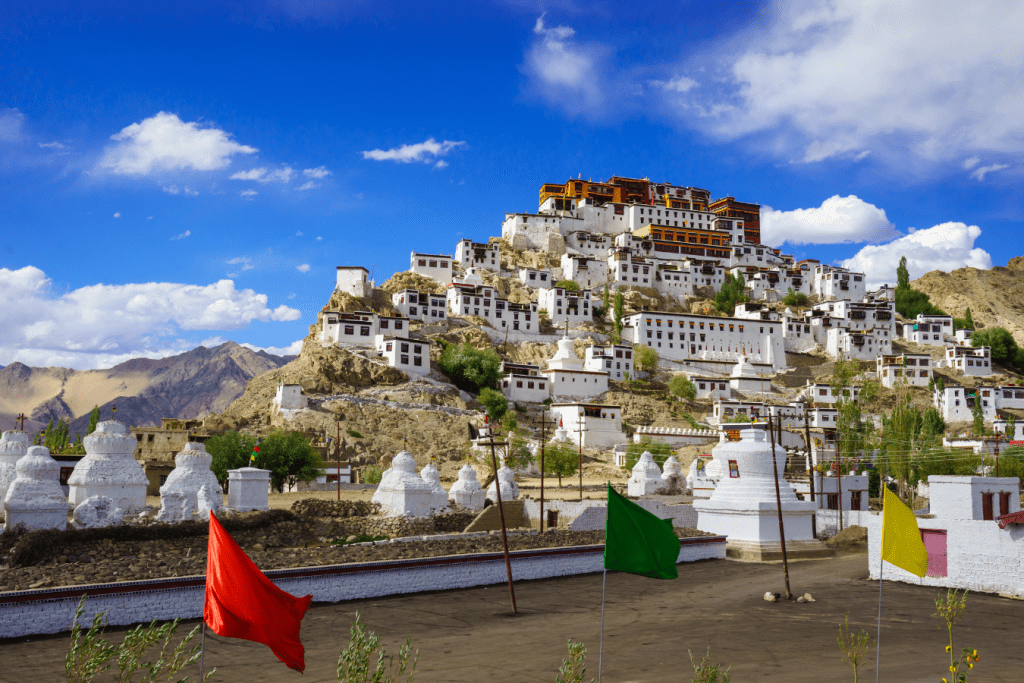
- Pangong Lake (Pangong Tso)
- Nubra Valley
- Tso Moriri
- Hanle
- Changthang
For Indian Citizens:
Indian nationals need an Inner Line Permit (ILP) to visit these areas.
- You can apply online through the official Ladakh Permit Portal.
- After applying, you can download and print the permit.
Permit Fees:
- Environment Fee: ₹400
- Red Cross Fund: ₹100
- Wildlife Fee: ₹20 per day
Make sure to carry multiple copies of your permit and a valid ID, as you will need to show them at checkpoints.
For Foreign Nationals:
Foreigners need a Protected Area Permit (PAP) to visit these areas.
- You must apply through a registered travel agent in Leh.
- The travel agent will help you get the PAP.
- You’ll need a group of at least two people, as solo travelers usually can’t apply for a PAP on their own.
Make sure to carry multiple copies of the permit and your passport.
5. How Many Days Should You Spend in Ladakh?
Ladakh isn’t just a destination — it’s an experience. And like all great experiences, it takes time. Due to the region’s high altitude, it’s important to go slow and allow your body to adjust. Rushing can lead to altitude sickness and missed moments of beauty.
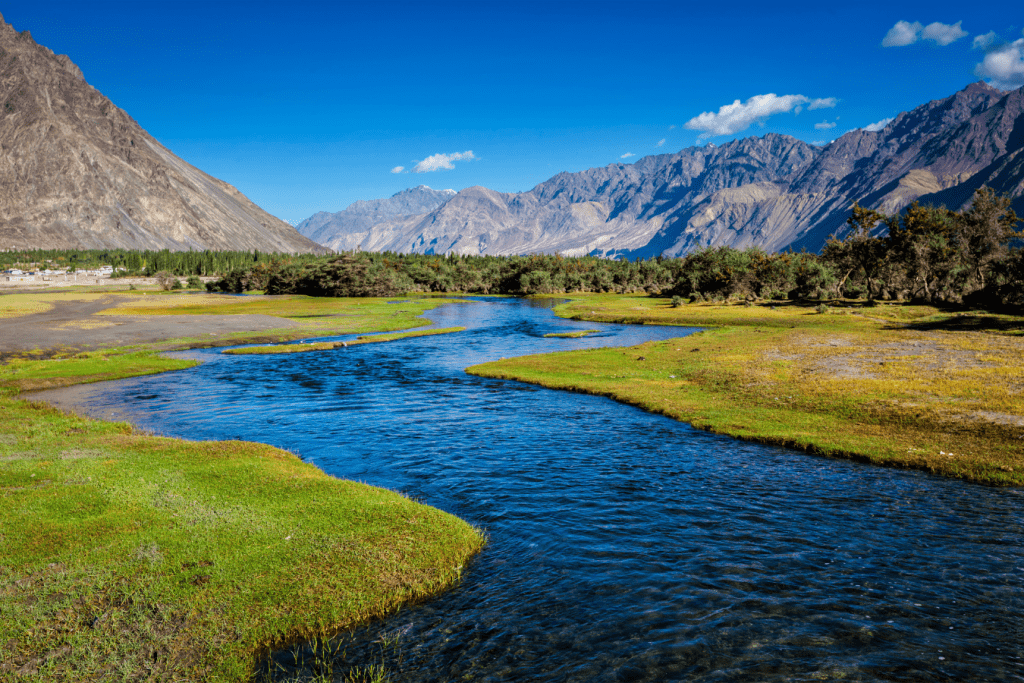
As a rule of thumb, plan your trip based on how much you want to explore:
- 7 Days: This is the minimum recommended. You can explore Leh, Nubra Valley, and Pangong Lake comfortably. It’s a good starter plan if you’re short on time.
- 10–12 Days: With a few more days, you can also visit Tso Moriri Lake, Alchi Monastery, Lamayuru, and other beautiful villages or monasteries. This option allows for a deeper cultural experience.
- 2 Weeks or More: If you love going off the beaten path, this is for you. You can head to Hanle for stargazing, explore Zanskar Valley, or take on scenic treks like Markha Valley or Sham Valley.
👉 Important Tip:
No matter how long you stay, always spend your first two days in Leh. Why? Because it helps your body acclimatize to the high altitude (around 11,500 ft). Use these days to rest, walk slowly around the town, drink lots of water, and avoid physical exertion.
6. Best Time to Visit
Ladakh’s landscape and weather change with the seasons. So, the best time to go depends on your travel style and interests.
Summer (May to September): The Best Time to Go
This is the most popular and easiest season for travelers. The weather is dry and sunny, the skies are clear, and all major roads and passes are open. Places like Pangong Lake, Nubra Valley, and Tso Moriri are fully accessible.
- Ideal for sightseeing, photography, and cultural festivals
- Great for families and first-time visitors
- Full tourist services available (hotels, taxis, bike rentals)
Tip: If you’re visiting Ladakh for the first time, summer is the safest and most comfortable choice.
Winter (November to February): For the Adventurous
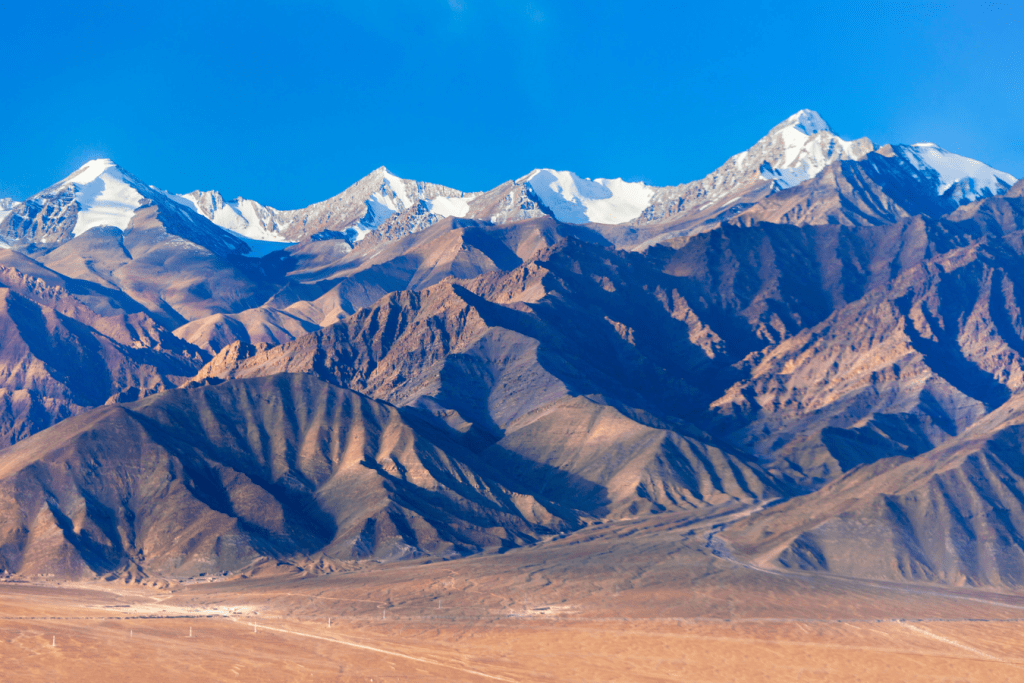
Winter in Ladakh is extremely cold, but incredibly beautiful. Snow covers the mountains, the towns are peaceful, and some treks like the Chadar Trek offer a once-in-a-lifetime experience. However, expect very low temperatures and limited accommodation.
- Best for snow lovers and adventure seekers
- Temperatures can drop below -20°C
- Some roads and high passes are closed due to snow
Note: Only consider a winter trip if you are well-prepared for cold weather and isolation.
Monsoon (Late July to August): Travel with Caution
Ladakh itself doesn’t receive heavy rain, but the routes to get there—especially from Manali or Kashmir—can be risky due to landslides. Conditions can be unpredictable.
- Roads from other states may be blocked by landslides
- Travel delays are common
- Not recommended for first-time visitors or tight schedules
7. Where to Stay in Leh and Ladakh
Ladakh offers all kinds of stays to suit your travel style:\
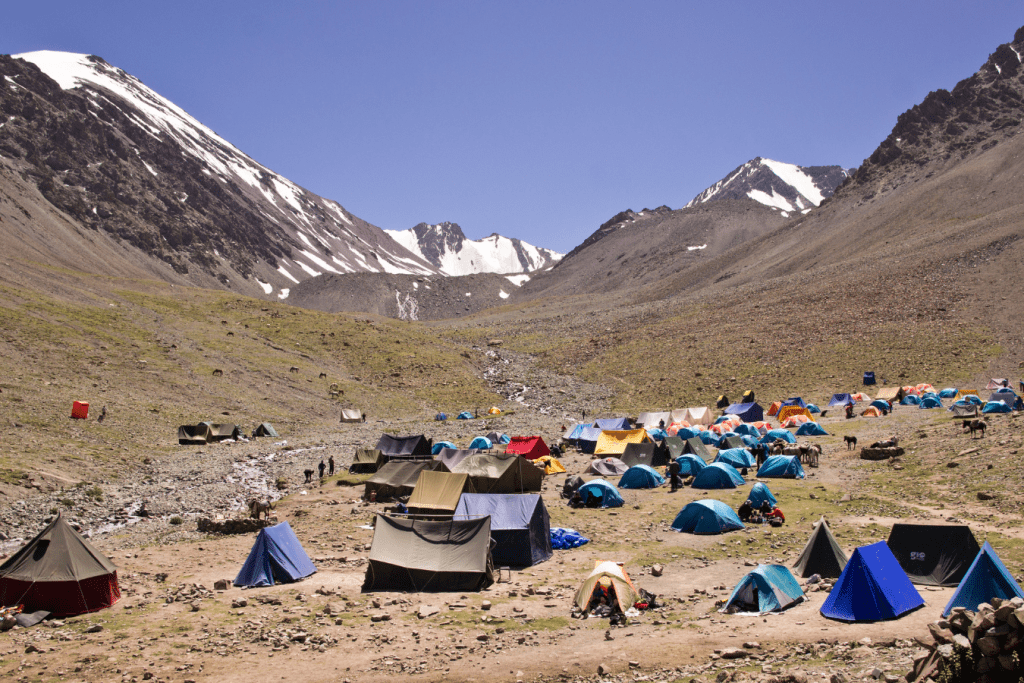
- Budget Guesthouses – Found in Leh’s Old Town and Changspa; basic and affordable.
- Mid-Range Hotels – Comfortable with modern facilities; ideal for families and couples.
- Luxury Stays – Like The Grand Dragon or Chamba Camp for a premium experience.
- Village Homestays – In places like Turtuk and Alchi; great for local culture and simple living.
Tip: Book in advance during peak season (June–August). Winter options are limited.
8. What to Eat in Ladakh
Food in Ladakh is not just about taste — it’s also about warmth and comfort, which is especially important in the chilly mountain air. While you’ll find plenty of Indian, Tibetan, and even continental dishes in Leh, trying the local cuisine adds a deeper flavor to your travel experience.
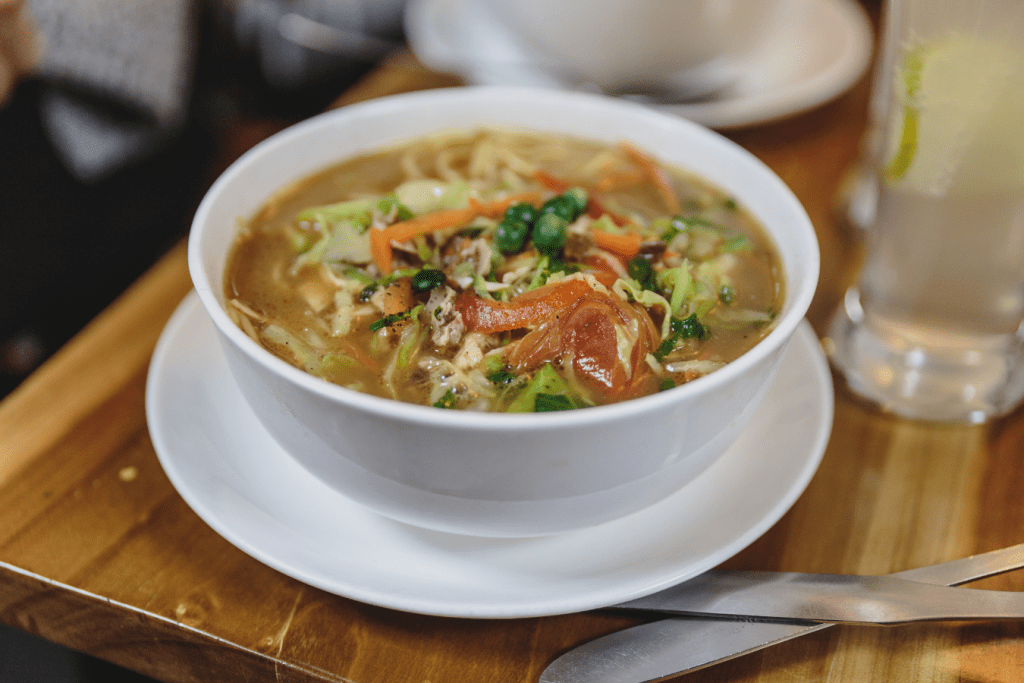
Here are a few must-try dishes:
- Thukpa – A hearty noodle soup that’s perfect after a cold day of exploring. It comes in vegetarian and non-vegetarian versions.
- Skyu – This is a traditional Ladakhi stew made with dough balls, root vegetables, and sometimes meat — filling and flavorful.
- Momos – You can’t go wrong with these dumplings, whether steamed or fried. They’re a favorite across Ladakh.
- Butter Tea (Gur Gur Chai) – A salty tea made with butter and yak milk. It may taste unusual at first, but it’s a local staple that helps with altitude and dryness.
- Chhang – A local barley-based alcoholic drink, enjoyed during festivals and gatherings (adults only!).
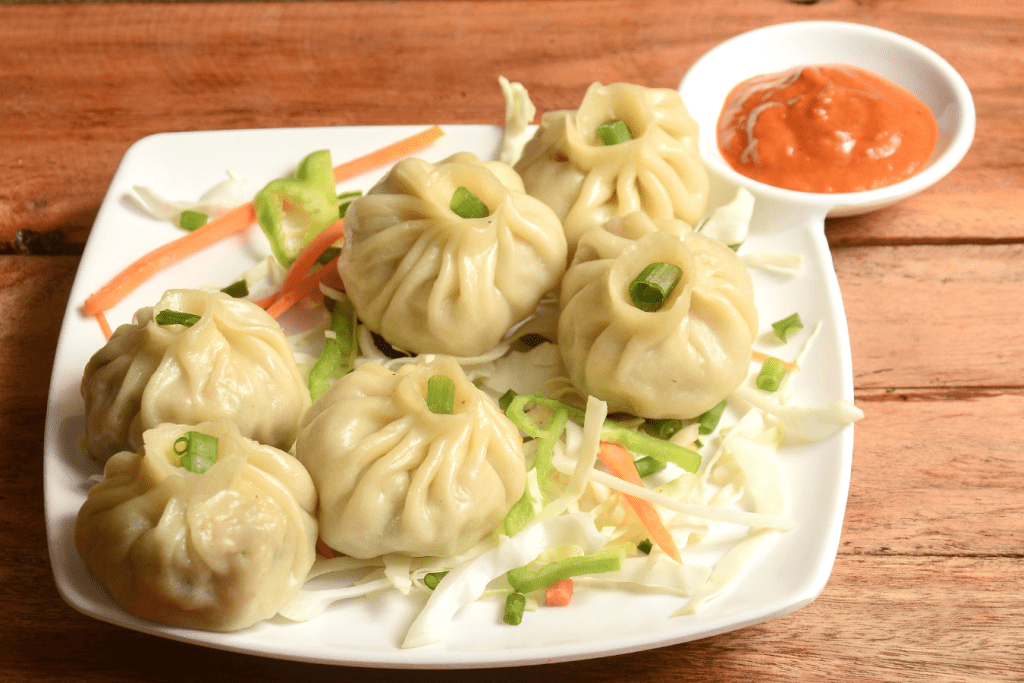
Moreover, most cafes and restaurants in Leh cater to all diets, offering vegetarian, vegan, and gluten-free meals. Popular spots not only serve good food but also offer warm, cozy atmospheres to relax in.
So, whether you’re a foodie or just need energy for the next mountain pass, Ladakh’s cuisine won’t disappoint.
9. Getting Around Ladakh
After you reach Leh, you’ll need local transport to visit places like Nubra Valley, Pangong Lake, or Tso Moriri.
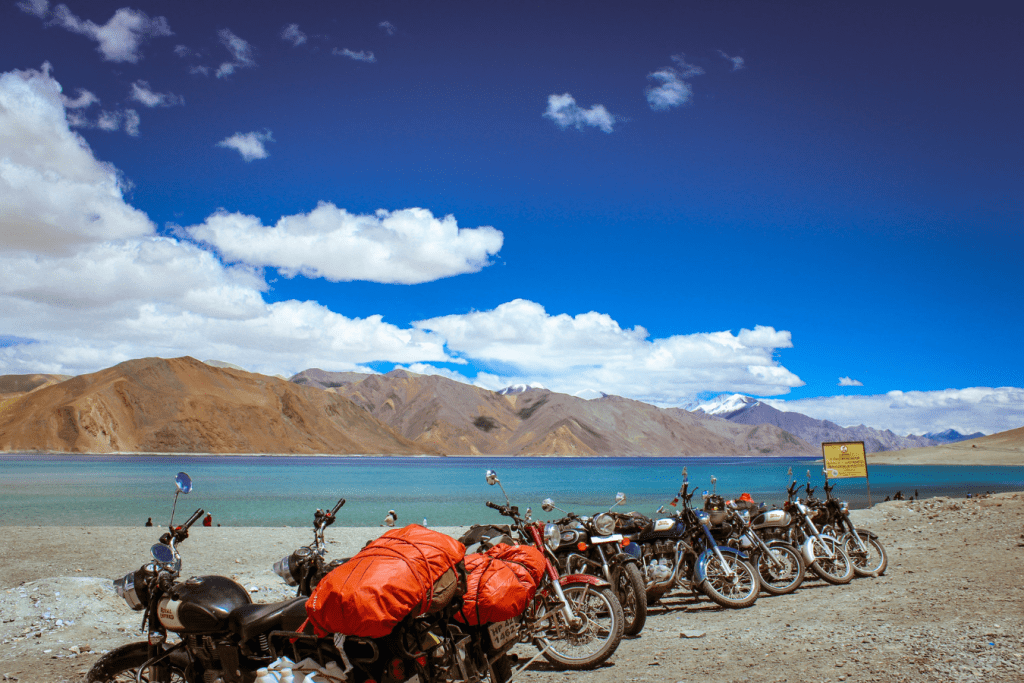
- Rent a Bike: Many travelers rent a Royal Enfield motorbike. It’s fun and gives you more freedom. But the roads can be tough, so only choose this if you’re confident riding.
- Hire a Taxi: Private taxis are comfortable and safe, especially if you’re in a group. However, they are a bit expensive and prices are fixed by the taxi union.
- Use Shared Taxis: These are cheaper and are arranged by hotels or travel agencies. You’ll share the ride with other tourists going to the same place.
- Take a Bus: Buses are the cheapest option. But they are slower, and routes are limited. Still, they are a great way to experience local life.
Also, remember that roads in Ladakh can change quickly due to weather. So, carry snacks, water, warm clothes, and a small first aid kit when traveling.
10. Top Places to Visit in Ladakh
Ladakh is full of natural wonders and spiritual spots. Whether you’re chasing lakes, mountain passes, or peaceful monasteries, there’s something for everyone.
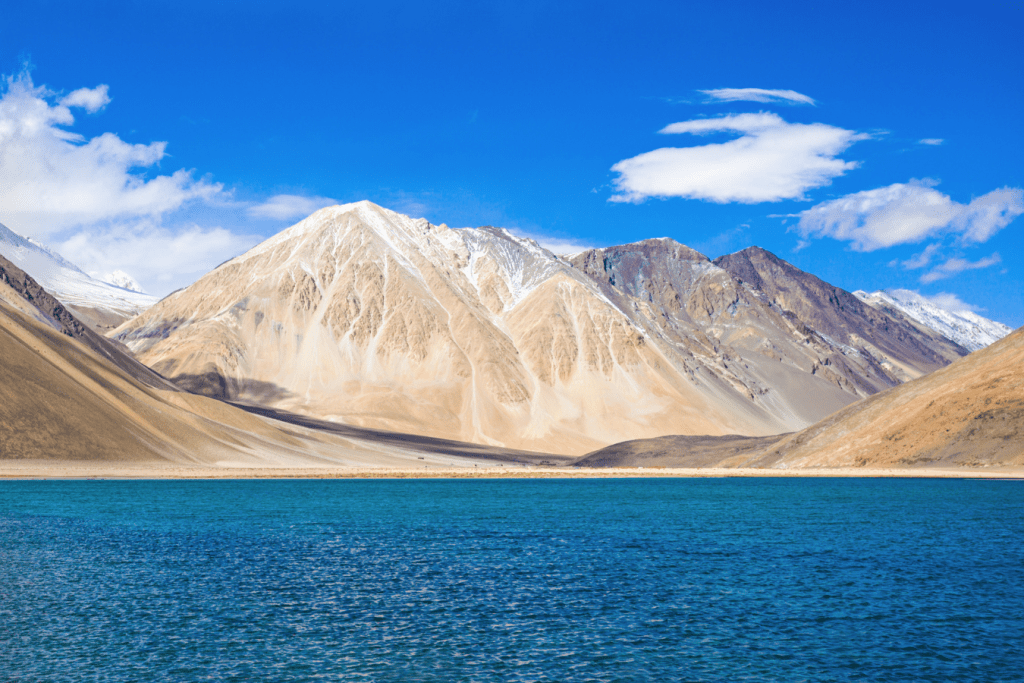
- Pangong Lake: This beautiful blue lake stretches over 130 km and even crosses into China. It changes color depending on the sky, making it perfect for photos.
- Nubra Valley: A rare mix of desert and mountains. You’ll find sand dunes, double-humped camels, and the peaceful Diskit Monastery here.
- Khardung La Pass: Known as one of the highest motorable roads in the world (over 18,000 ft), it’s an adventure just to get there.
- Tso Moriri Lake: Less crowded than Pangong, but just as stunning. It’s peaceful, remote, and great for quiet time in nature.
- Famous Monasteries:
- Hemis – the biggest and most well-known
- Thiksey – known for its beauty and hilltop views
- Alchi – the oldest, with unique wall paintings
- Lamayuru – called “Moonland” because of its strange rock formations
- Hemis – the biggest and most well-known
- Turtuk & Hanle: These are lesser-known places. Turtuk is a charming border village, while Hanle is famous for stargazing and silence.
- Magnetic Hill: A fun stop where your car looks like it rolls uphill — but it’s really just an optical trick.
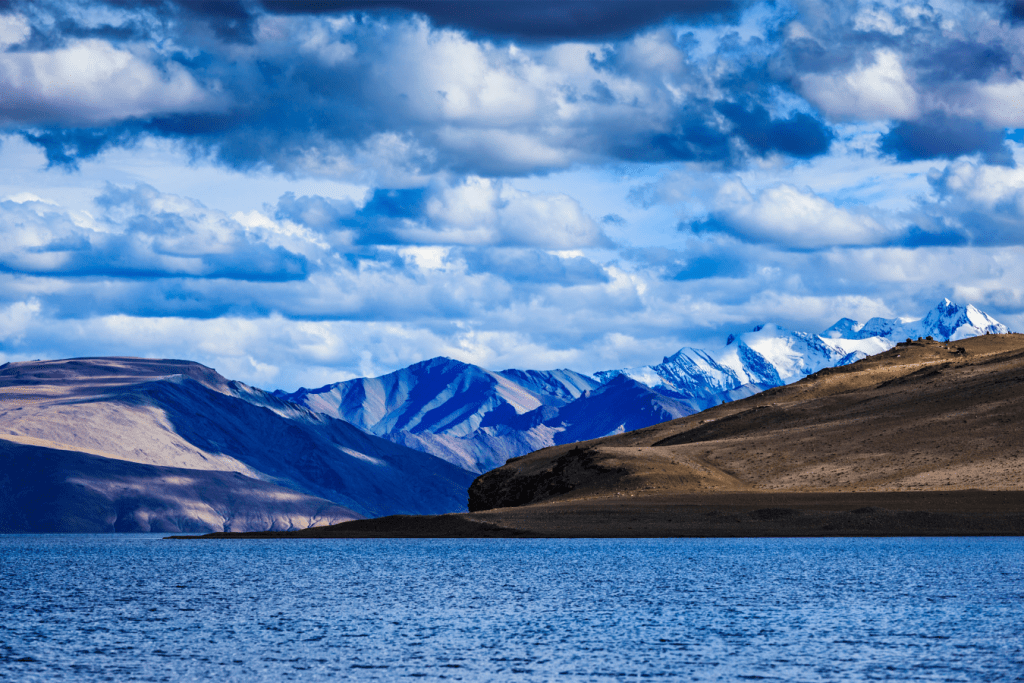
11. Trekking in Ladakh
If you love walking through nature, Ladakh is a dream. With its stunning landscapes, peaceful villages, and dramatic mountain views, it’s perfect for trekkers — whether you’re a beginner or a pro.
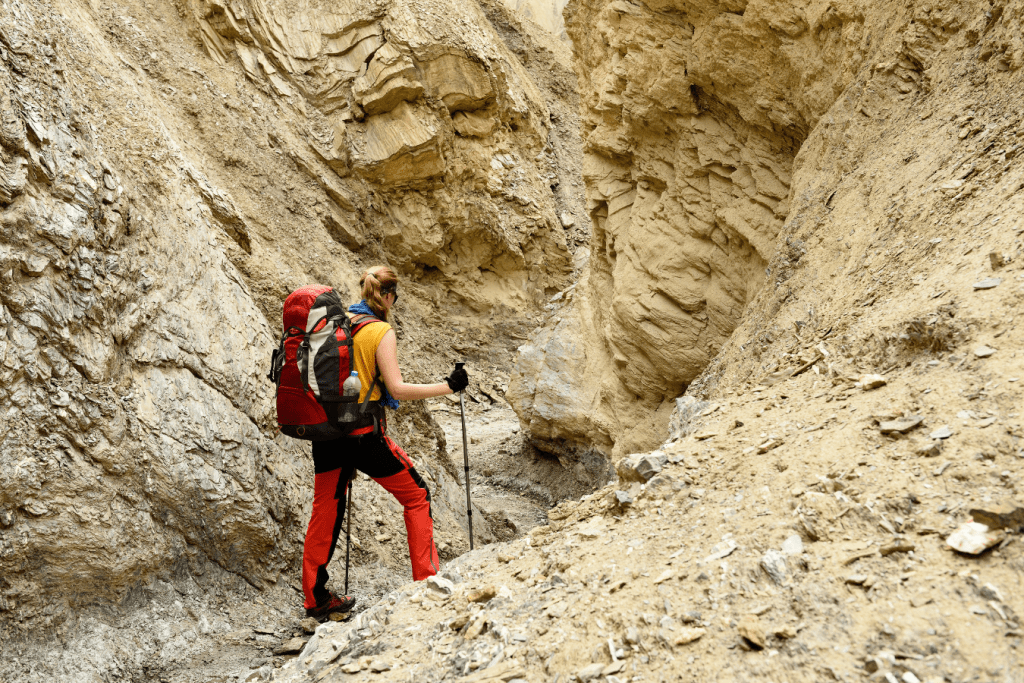
- Sham Valley Trek (Easy): Great for first-timers. It passes through friendly villages and gentle trails, so it’s not too hard on the body.
- Markha Valley Trek (Moderate): A favorite among trekkers. You’ll cross rivers, sleep in village homes, and walk through wide valleys surrounded by peaks.
- Chadar Trek (Challenging): Only for the brave! Done in winter, this trek takes you across the frozen Zanskar River. It’s cold but magical.
- Stok Kangri Expedition: If you’re aiming high — literally — this is a great option. The climb reaches over 6,000 meters and is for experienced trekkers.
Tip:
No matter which trek you choose, it’s best to go with a local guide or trusted tour company. Also, make sure you’re well-acclimatized before starting — altitude sickness is real up here!
12. Essential Travel Tips for Ladakh
Traveling to Ladakh is amazing, but the high altitude and remote areas mean you need to be well-prepared. Here are some key tips to help you stay safe and comfortable:
- First, take it slow. When you arrive, rest for at least 1–2 days to let your body get used to the thin air. This is called acclimatization — and it’s very important.
- Also, drink lots of water. Aim for at least 3 to 4 liters a day. Staying hydrated helps prevent altitude sickness.
- Don’t forget medicines. Bring basics like paracetamol, Diamox (for altitude), and motion sickness tablets. If you have any health issues, consult your doctor before traveling.
- Next, protect yourself from the sun. The sun is strong at high altitudes. Use a good sunscreen, wear sunglasses, and carry lip balm to avoid chapped lips.
- Carry cash. ATMs are only available in Leh, and they may not always work. So, withdraw enough cash before heading to remote areas.
- Lastly, check your mobile network. BSNL and Jio work best in Ladakh. Other networks may not have any signal at all.
13. Nearby Destinations to Explore
If you’re planning a trip to Ladakh, there are a few nearby regions that make great additions to your itinerary. These places offer similar rugged beauty or a peaceful break after your high-altitude adventure.
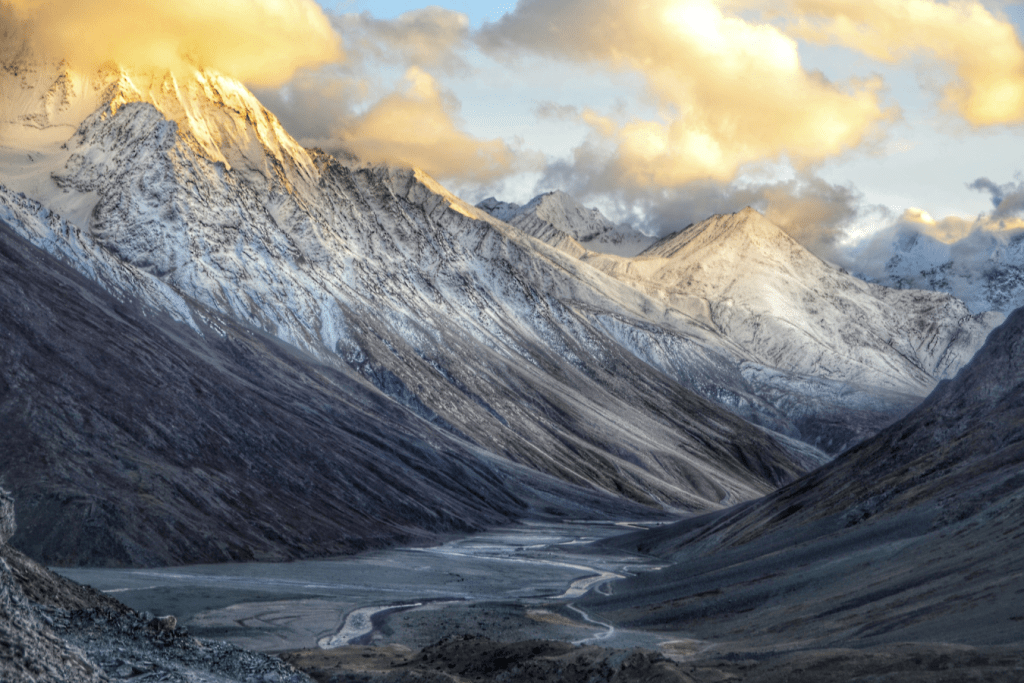
- Spiti Valley: Often called Ladakh’s twin, Spiti is a cold desert filled with dramatic mountains, quiet villages, and centuries-old monasteries like Key and Tabo. It’s perfect for travelers who love offbeat and remote destinations.
- Himachal Pradesh: Before or after visiting Ladakh, you can relax in Manali, known for its scenic views, cozy cafés, and vibrant vibe. For something quieter, head to Tirthan Valley — a peaceful escape with rivers, forests, and charming local life.
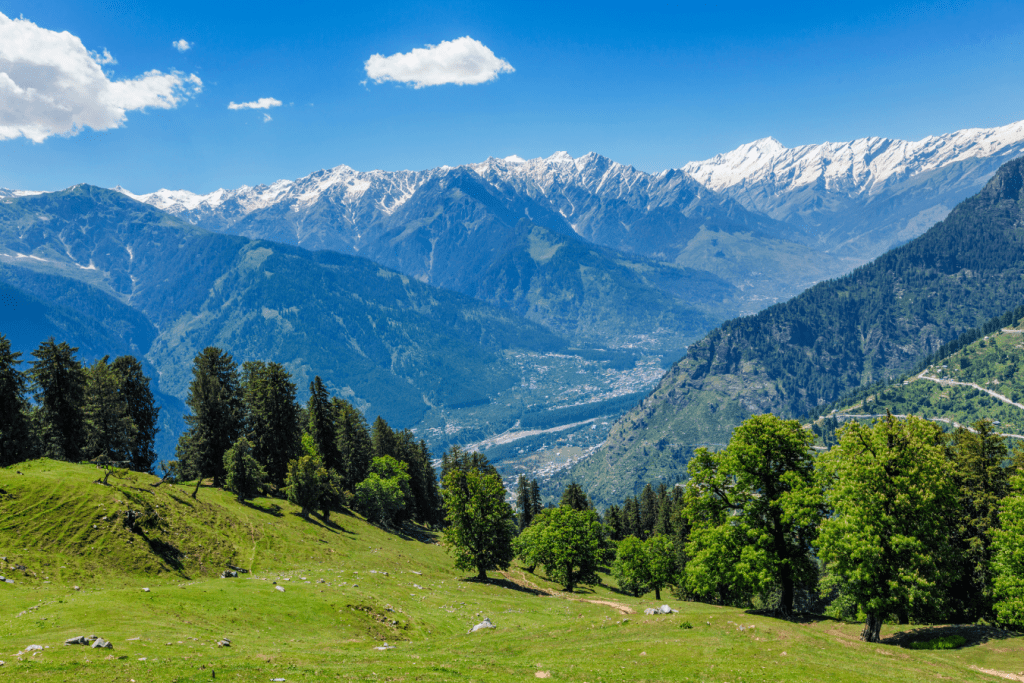
These destinations pair well with Ladakh, whether you’re seeking more adventure or a slower, more relaxed pace.
Conclusion
To sum it all up, Ladakh is not just a travel destination — it’s an experience that stays with you long after the journey ends. From its snow-capped peaks and turquoise lakes to ancient monasteries and welcoming locals, every corner of Ladakh offers something unique and soul-stirring.
Whether you’re drawn by the thrill of high-altitude adventure, the peace of quiet monasteries, or the simple joy of sipping butter tea while watching the sunset over the mountains — Ladakh delivers all of it, and more. The journey may require some planning and patience, but the rewards are immense.
Moreover, as you’ve seen in this guide, Ladakh suits every type of traveler. You can explore by bike, taxi, or bus; stay in luxurious hotels or simple village homestays; and enjoy everything from spiritual treks to stargazing in the silence of Hanle. And if you have extra time, pairing your Ladakh trip with places like Spiti Valley or Manali adds even more depth to your Himalayan adventure.
In the end, traveling through Ladakh teaches you to slow down, breathe deeply, and appreciate the raw beauty of nature — and perhaps even rediscover yourself in the process. So, pack smart, plan thoughtfully, and go with an open heart.